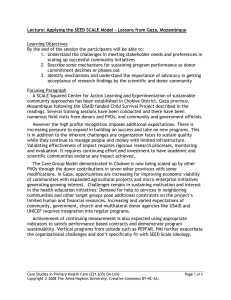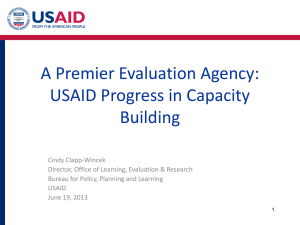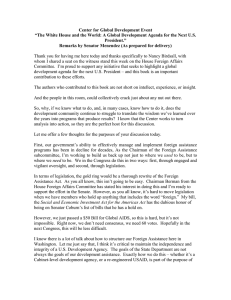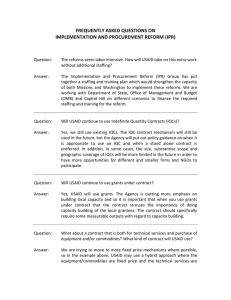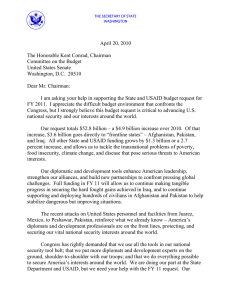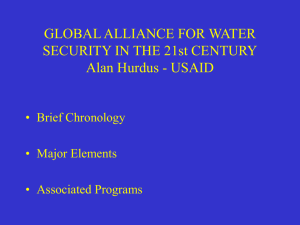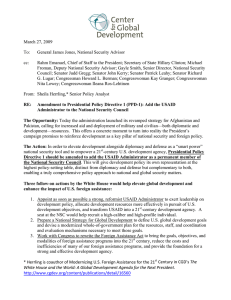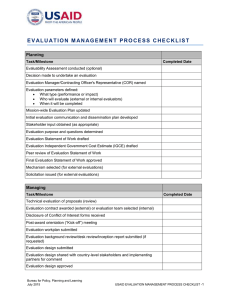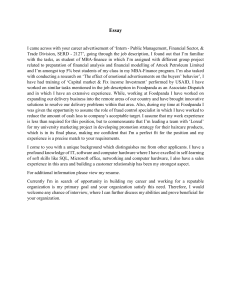Policy Thinking Youth Conflict Africa WW Center April 17
advertisement
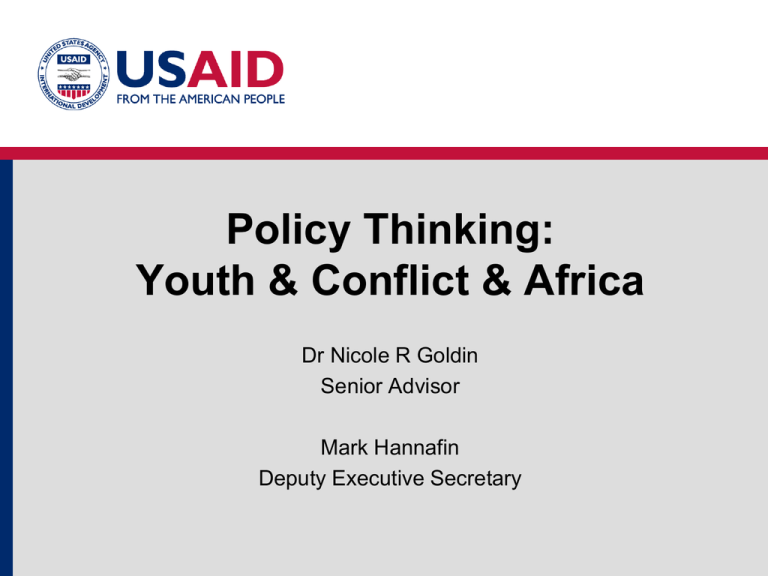
Policy Thinking: Youth & Conflict & Africa Dr Nicole R Goldin Senior Advisor Mark Hannafin Deputy Executive Secretary Why a USAID Policy on Youth? • Mission Demand • Largest generation in history • Dynamics of the Youth period Conflict Lens in (forthcoming) USAID Youth Policy • Policy is global, but relevance and applicability is contextual. • Knowledge-based, but cognizant of evidence gaps • Protection elements and considerations • Inclusion and application in context and principles Context • Youth Bulge vs. Demographic Dividend • Perpetrators and Victims • Distorted Transitions • Who are youth? Principles Overall trends in donor policy-making • New Deal for Engagement in fragile states, increased focus on aid effectiveness and demonstrating results. • WDR 2011 “security, justice, jobs” • USAID Policy Framework – specific objective • There is a greater focus on “security” issues and increased donor funding to “fragile” contexts. • There is a renewed donor focus on “inclusive” and agriculture-driven economic growth • Risk taking and “do no harm” – increasing innovation and experimentation Youth-Conflict Awareness at USAID • • • • • Analysis is crucial: Conflict and youth analyses provides a stronger understanding as to how youth fit into the social construct Myth-busting: Youth “bulges” do not lead inexorably to conflict, however create special challenges and opportunities to societies. Sustainable impact beyond peace building activities: Localized youth engagement and training adds value, however absent structural policy reform are not enough to prevent conflict or achieve peace Formal and informal education for youth: Relevant and marketlinked vocational and skills training provides greater focus on local economic recovery with youth among the key target groups. Gender recognition: focusing on the specific needs of adolescent girls and ensuring their participation—both to realize their rights and because of the catalytic effect this can have on their families and communities. Conflict in Africa: Some Youth Approaches • Côte d’Ivoire – Transition initiative program – a blend of media, communications, reconciliation • Somalia – Mobile phone technology for workforce development – linking labor markets, trainings through SMS • Morocco – Countering violent extremism – engaging youth in prisons on soft skills development and mentoring • Youth Map and Youth Innovation Fund – linking analysis to grant opportunities for immediate impact

